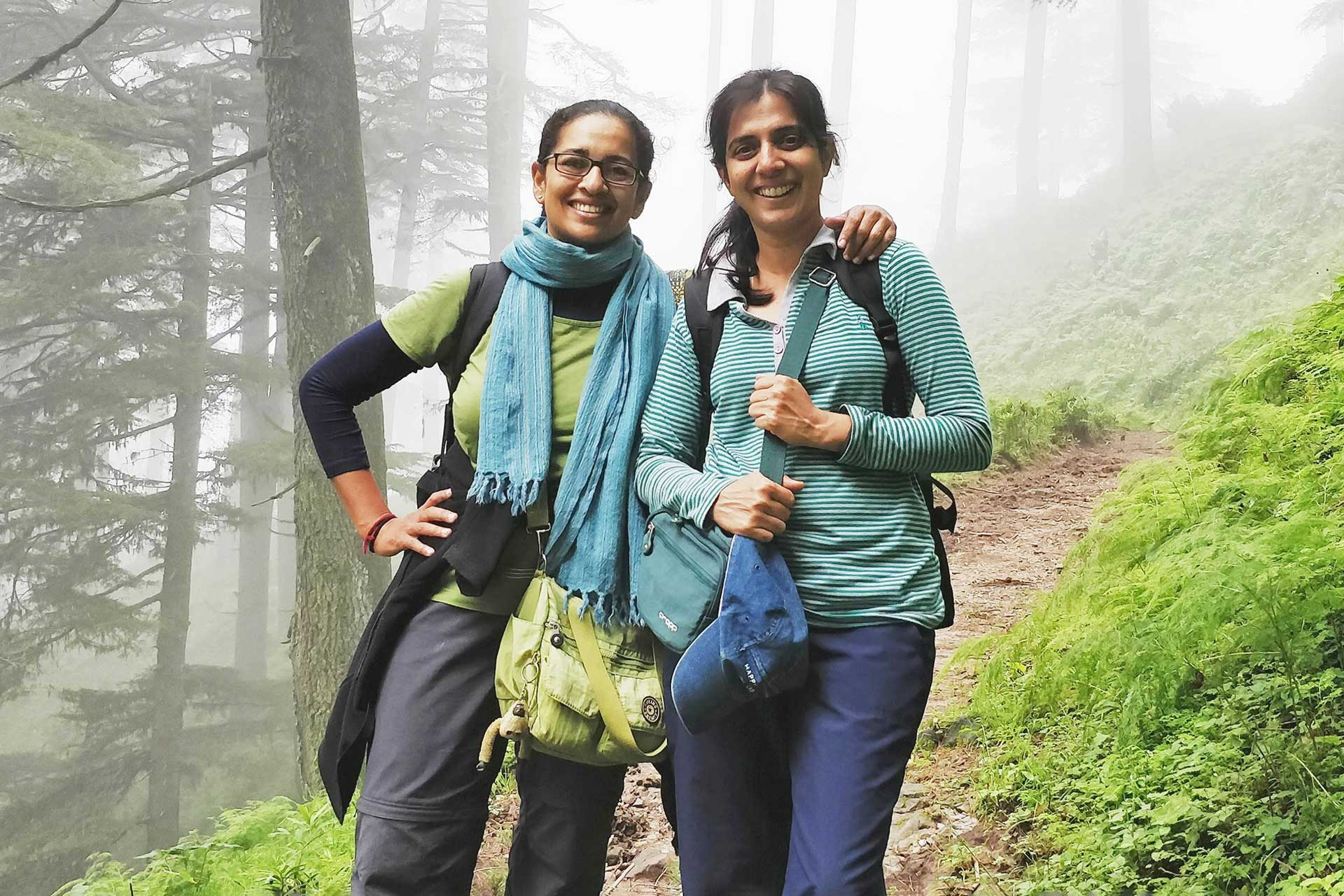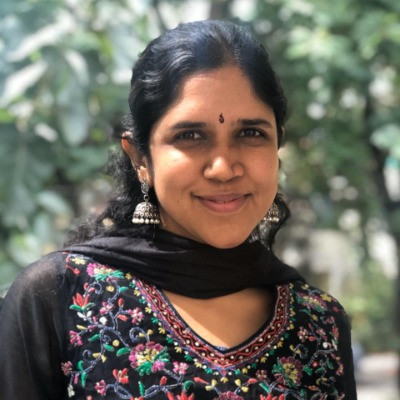Ketaki Ghate and Manasi Karandikar of Oikos For Ecological Services talk about their 20-year journey in restoration and conservation.
In 2019, the World Resources Institute released a report called Upward and Outward Growth: Managing Urban Expansion for More Equitable Cities in the Global South. Among the report’s key findings is that by 2030 urban areas will increase in size by 80 per cent. The report also highlighted how the unmanaged growth of cities imposes significant economic and environmental burdens.
But we are all aware of this fact. We often find ourselves exploring a new part of the city we call home only to realise it was once considered outside city limits. As we pave the way for development and growth, it is also essential that we factor in conservation and find ways to regenerate land and build thriving ecosystems around our concrete establishments.
If you think this sounds utopic, you probably haven’t heard of Oikos For Ecological Services. Founded by Ketaki Ghate and Manasi Karandikar, Oikos provides holistic solutions for ecological restoration and nature conservation. Whether it’s a tiny corner of a farmhouse or a 2000-acre township, Oikos works to transform available land using nature-based solutions, improving the region’s biodiversity and natural resources.
In this interview, team Oikos talks about their journey and how they approach their projects. Before you read further, here is a fun fact! The word ecology is derived from the Greek word oikos, which means home! Let’s now hear from the namesake.
Humble Beginnings
Ghate and Karandikar first met in 2001 when they enrolled on the Sustainable Management of Natural Resources and Nature Conservation Program at the Ecological Society, Pune. Both came from varied backgrounds and sought the course to understand how they could channel their interest in nature conservation.
Karandikar had completed a degree in engineering and a master's in environmental science. “I was always interested in nature and wildlife conservation, but I did not know how to go about making a career of it,” she said. The course at the Ecological Society came as an answer to this conundrum. Ghate, on the other hand, has a background in chemistry and botany and moved to Pune from Chalisgaon to pursue theatre. With a deep-seated passion for the natural world, she also enrolled in the same course.
“The course helped us understand the intricacies of nature conservation and ecological restoration, and both Ketaki and I struck a chord when we realised that we were interested in implementing practical solutions for the issues plaguing the environment,” said Karandikar.
Even before completing the course, the duo began working on restoration projects, putting theory into practice. They first took on a half-acre piece of land on the outskirts of Pune, where they planted several native plants and established a thriving ecosystem for butterflies. The results delighted them, and the project also became much-talked about in the conservation circles, giving Ghate and Karandikar the confidence to surge ahead with their goals.
This was followed by a massive project that entailed performing biodiversity surveys, restoration and conservation activities over 2000 acres of land for the Lavasa Township Development in Warasgaon, Maharashtra. Between 2002 and 2004, they spent time in the Western Ghats, where the township is located, coming up with an ecological plan for the region.
“Even though it was a township, our goal was to find avenues for conservation and restoration. We worked on introducing native plants, implementing ways for soil moisture conservation and restoring streams,” explained Ghate. “We would stay there for about four days a week, which gave us the opportunity to interact with the locals and helped us understand the landscape, and we involved them in some of the activities,” she added.
Since then, Ghate and Karandikar have gone on to work on 150+ projects and have provided ecological assessments for more than 20,000 acres of land!
Carving Out a Niche
When Ghate and Karandikar began their journey in 2002, terms like native, ecological restoration and biodiversity conservation were virtually nondescript. In their initial days, Oikos used several approaches to make these concepts more accessible to people. “We established a nursery for native and rare plants. We contacted nurseries across the country and talked to them about the importance of propagating native species,” explained Karandikar. The Oikos nursery, which began with about 50 species, now houses more than 300 species of native plants.
In 2004, they participated in an exhibition for farmers where they showcased native and non-native plants while highlighting the biogeographic zones of Maharashtra. The team produced the information digitally and shared it via compact discs (CD), a first-of-its-kind initiative back then.
Exhibitions have played a crucial role in the growth of Oikos, added Ghate. The duo participated in several construction-related events where they talked about their work to developers, encouraging conservation measures early on in their projects. They also worked with individuals who purchased land outside city limits for recreational purposes. “Such plots gave us the opportunity for more targeted activities that aided in conservation. The owners were not planning to utilise the land for agriculture and did not expect any returns from it, which made it easy for us to demonstrate how the land could be restored with the right inputs and practices,” they said.
The team had to invest in a lot of ‘show and tell’ in their initial days, but with time they found people gravitating towards the concepts of restoration and conservation. What helped immensely was that several green building certifications began emphasising native plants as part of their certification process, thus getting people on the restoration bandwagon.
The Oikos Way
Looking at Ghate and Karandikar’s impressive portfolio, it does feel like they have a magic wand that can be waved over a patch of land to restore it to its pristine self. However, the reality is far from this. The duo breakdown their services―a list of exhaustive activities that involves understanding the landscape and delivering tailored solutions.
From ecological surveys that include seasonal assessments and documenting the land's biodiversity to in-depth planning, the team performs various tasks to understand the land and the life that thrives on it. They also work to improve soil health and preserve existing water bodies. For small areas, like industry campuses, Oikos offers eco landscaping services creating green patches with a focus on native plants.
Oikos also works on projects that propagate native plants and document traditional ecological knowledge. During the pandemic, they worked on a bilingual booklet named 21 Prospects For Nature to showcase simple practices that people can adopt to enhance biodiversity in their immediate surroundings.
“It’s not just about improving the aesthetic value of the land or greening the area,” the team explained. “It is about developing biodiverse habitats using optimal, sustainable resources to establish holistic landscapes,” they added.
An example of this thoughtful, multi-pronged approach is the project in Ranwa, Maharashtra, where they worked on a 24-acre land impacted by frequent fires and overgrazing. The team began work in 2005, and for a whole year, they studied the region and its surroundings, including the history of the land and the socio-cultural connections to it. “The land is located in the northern region of the Sahyadris in the Koyna catchment, right opposite the Koyna Wildlife Sanctuary. There were also sacred groves in the nearby areas that were well-protected by the locals. When we spoke to them about the land, we learnt that decades ago, there was good tree cover and several animals frequented the region," explained Karandikar, giving a brief overview of how they built connections between the land's past and present.
They protected the land from anthropogenic activities using natural barriers like hardy shrubs and stone bundles. They worked on soil health, which in turn led to an improvement in the region's biodiversity. Today, the land hosts several birds, insects and more than 150 floral species, not all of which were planted by the team.
It is imperative to add that they do not always have access to vast empty lands. The team also shared the example of a 6000-acre township project proposal with infrastructure scattered throughout. “Instead of fragmenting the land, we worked on establishing corridors for the animals in the region and safeguarding the existing healthy forest patches. The idea is to preserve what is good and perform restoration where needed,” added Ghate. At Oikos, every patch of land has its own unique story.
The Road Ahead
They say if you do what you love, you will never have to work a day in your life. Both Ghate and Karandikar seem to embody this philosophy. On January 1, 2022, the team shared a post expressing their gratitude for completing two decades as an organisation.
But this journey has not been devoid of hurdles. One of the most significant challenges for the team was communicating ideas of conservation and restoration to local communities when the land is a source of livelihood for them.
“Marrying economy and ecology is not that easy. Although we have not worked on many projects involving local communities, we understand that the approach in such cases needs to be extremely considerate. They are used to a certain way of doing things, and their practices have been with them for many years. So, it is essential to build awareness before we do anything,” said Karandikar.
“If you think about it, conservation and restoration are modern approaches. Apart from sacred groves, there are no concepts where communities proactively partake in conservation and give back to nature,” said Ghate adding to the discussion. But thanks to team Oikos, people can now visibly see how a piece of restored land can benefit the people around it.
The team shared that they are currently working on establishing an agro-ecology learning centre on a 100-acre land where they will create zones for natural farming, seed preservation, and develop food (rich in edible species) and natural forests.
Ghate and Karandikar are now faculty members at the Ecological Society, where they began this journey together. But beyond the course, they continue to share information about the importance of ecological restoration on their YouTube channel through poems, events and informative video bites. They recently announced an education program for kids called 'Nisarga Shala' or Nature's School. As the team said, "When it comes to nature, the learning never stops."
Visit oikos.in to learn more about what they do.









